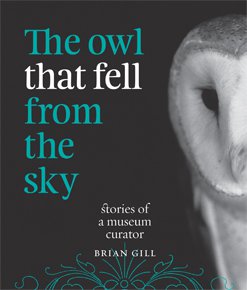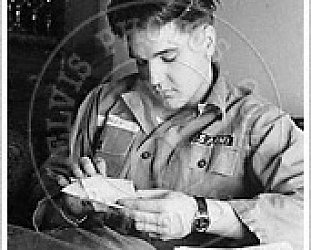Graham Reid | | 3 min read

In the 21st century museum of the popular imagination, musty cases and specimens under glass have been replaced by brightly coloured interactive displays, whizz-bang educational sites for youngsters and holograms in place of artifacts. This state-of-the-art museum is noisy and full of life, unlike those ill-lit halls where stooped older people shuffled around, silently peering at fossils and typewritten cards.
Such cliches aren't entirely true of course, and Auckland's War Memorial Museum keeps important displays which attracted attention more than a century ago. Like the Arctic group of musk oxen first seen in 1906, or the albatross diorama which appeared in 1970 but displays birds which have been in the museum's collection since the 30s.
“We tend to walk past that diorama because we've seen it so often,” says Dr. Brian Gill, curator of birds and land vertebrates. “But when you look closely you realise there is that four and a half metre diameter dome in the background, and the way they've created the perfect illusion of a natural scene with a limitless horizon is a gem.
“The Arctic group is still in marvelous condition, it's wonderful to have that Edwardian taxidermy. And the orang-utan from Borneo. It's in a tree house so you have to crouch down and look up – children do -- and you can see it in the top of the tree hut.”
Gill – three decades at the museum and an enthusiastic advocate for its place in the city's cultural and scientific life – has written a quiet, understated yet fascinating book about the history – and sometimes eccentric characters – behind of a number of the exhibits on display or important specimens in storage for research purposes.
The Owl That Fell From the Sky is a gently digressive book where slivers of autobiography weave through clearly articulated scientific explanations, former museum directors and stuffed birds come alive to tell their stories through Gill's pen, and – although advancing the case for the historical memory inherent in the traditional museum model – Gill embraces the advances technology has brought.
Where once, as recently as the 80s, he would trawl through 18000 catalogue cards and photocopy them for researchers, computerisation allows for faster and more democratic access as the museum can now offer an extensive, readily available on-line catalogue.
Yet publicly available natural history collections came from private sources originally, such as the 20,000 birds acquired by the 19th century British industrialist Henry Seebohm, which would often be gifted to museums.
“There were these 'cabinets of curiosity' which didn't just have natural history but had human history items as well. They were little talking points in the drawing rooms of rich people and aristocrats. It all evolved from that.”
Gill's stories of how the Auckland museum came to have Rajah the elephant (and the heroic taxidermy undertaken), the creation of that extraordinary albatross diorama by Leo Cappel and Captain Cook's tortoise (which unexpectedly begins by referencing the Philip K. Dick story Do Androids Dream of Electric Sheep? which inspired the film Bladerunner) are engrossing.
Along the way are fascinating characters: the Belgian-born George Boulenger at the British Museum who refused to read any German publication issued after 1914 after they invaded his homeland, or that museum's Peter Whitehead who abandoned his satirical novel about museum culture when things became more ludicrous than anything he was inventing.
And the title story is pure detective work starting with a phone call in 1983 from a schoolgirl who had found an unusual bird in Papatoetoe. It was a barn owl -- rare in New Zealand, this only the fourth identified – and posed questions of how it came to be here. Gill performed an autopsy on the bird and in its gizzard found a tiny insect. That lead to a phone call to the museum's entomologist, the insect specimen being sent to Canberra and . . . to say more would give away the ending to what reads like a CSI case from the real world.
“Apart from the stories themselves,” says Gill, “another aim was to try to tell people what goes on in natural history museums, why those collections are important, what they are used for and how they can be of benefit to the cities which have them.
“So it is about what curators do and the myriad things which go on behind the scenes which the public are not aware of. To demystify that I suppose.”
Aside from collating and caring for the current collection, assessing and acquiring new specimens, and cheerfully dealing with between 30 and 60 enquires a month from the public (he recalls an Otago Museum curator's kindness to him as a curious schoolboy with an unusual fish), another of Gill's current projects is researching the correspondence of former museum director and botanist Thomas Cheeseman.
“He was director for nearly 50 years from 1874 and was a meticulous man. We have letters sent to him, but he also made a sort of carbon copy of his outgoing letters and we have bound volumes of those very thin sheets. So in one archive you can see both ends of the correspondence.
“Because he was here for so long and was a wonderful researcher, that is a legacy for us and the city.”
It seems unnecessary to ask this assiduous researcher – who keeps the past alive in the present and thinks of future generations – if he has kept his correspondence.
“Quite a bit and it's all filed away,” he laughs, noting he still tends to print out important e-mails. “That is like a substitute for letters. We will have a good record.”
The Owl That Fell From the Sky by Brian Gill (Awa Press, $35) is
available now.





post a comment